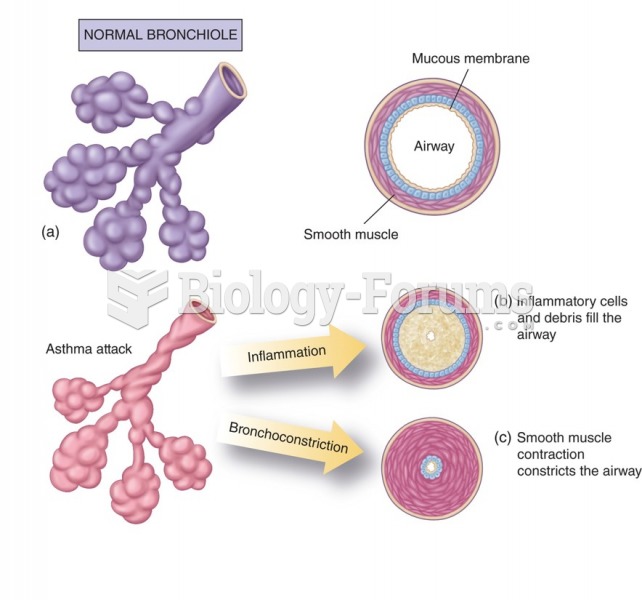This topic contains a solution. Click here to go to the answer
|
|
|
Did you know?
Children with strabismus (crossed eyes) can be treated. They are not able to outgrow this condition on their own, but with help, it can be more easily corrected at a younger age. It is important for infants to have eye examinations as early as possible in their development and then another at age 2 years.
Did you know?
Women are 50% to 75% more likely than men to experience an adverse drug reaction.
Did you know?
Excessive alcohol use costs the country approximately $235 billion every year.
Did you know?
There are 20 feet of blood vessels in each square inch of human skin.
Did you know?
Drug-induced pharmacodynamic effects manifested in older adults include drug-induced renal toxicity, which can be a major factor when these adults are experiencing other kidney problems.







